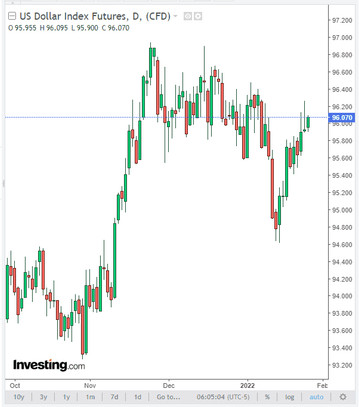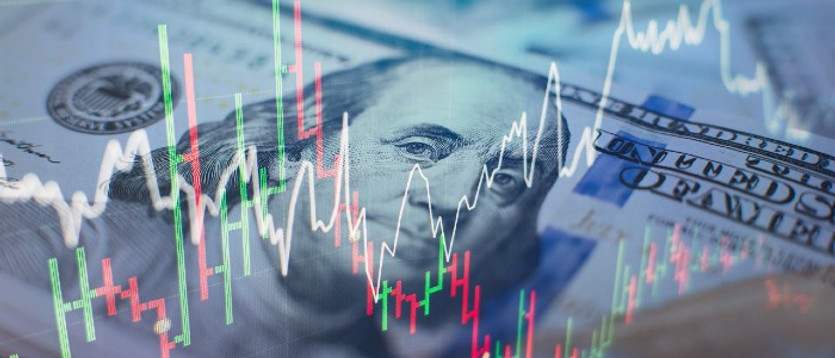The focus of investors today is the Fed meeting. It started yesterday and will end today with the publication at 19:00 (GMT) of the interest rate decision. Fed officials are widely expected to refrain from raising interest rates at this meeting for the time being. As Fed Chairman Jerome Powell has repeatedly said before, the quantitative easing program will be completed first before the start of the cycle of raising interest rates. According to economists, the first increase in the Fed's interest rate may occur as early as March, and a total of 3 increases are expected this year. Expectations of the beginning of the cycle of raising interest rates by the Fed support the USD quotes. At the same time, the minutes of the Fed's December meeting, released earlier this month, hinted at a propensity for a sharper reduction in the central bank's balance sheet and the possibility of an earlier start to the interest rate cycle. Traders are still set on the fact that the Fed, after raising interest rates, will begin to reduce its asset portfolio (the Fed's balance sheet is now $8.8 trillion). The current accelerated decline in asset purchases by the Fed and expectations of the beginning of a cycle of interest rate hikes are already pushing US Treasury yields higher. But if the Fed begins to reduce its balance sheet, this will cause an even greater decrease in the cost of bonds and, accordingly, an increase in their yield, and this, in turn, will contribute to the strengthening of the dollar.
However, the Fed is in a difficult situation. On the one hand, it needs to take action to contain accelerating inflation (one of the main tasks of the central bank of any country): as reported earlier this month by the US Department of Labor, consumer prices rose in December by 7.0% compared to the same period of the previous year, which was the maximum since June 1982 (annual price increase in November was 6.8%). If inflation continues to rise at the same rate, the Fed may not be able to keep up with it by steadily raising interest rates, which creates the threat of hyperinflation, and this will directly affect the value of the dollar.
On the other hand, according to some economists, a further decline in US stocks and stock indices may lead to an outflow of capital from US assets, and this will negatively affect the dollar. It is worth taking a look at the dynamics of the main US stock indices, which have declined sharply this month, returning to the levels of 7 months ago.
The sharp downward correction in the US stock market is also, in part, due to expectations of the imminent start of the Fed's tightening monetary policy cycle.
In a word, an interesting development of events in the financial market awaits us, and the situation may develop according to a completely unpredictable scenario.
Theoretically, the increase in the interest rate of the Fed should have a positive impact on the dollar. However, much will depend on the rhetoric of accompanying comments from the Fed's leadership regarding future intentions. The dollar may weaken if the Fed leaders refrain from hinting at a more aggressive than previously expected tightening of monetary policy. However, one should not count on a deeper decline in the USD either. Either way, the widening divergence of monetary policy trajectories in the US and other advanced economies will still have a lasting positive impact on the dollar, especially if the Fed manages to beat US inflation relatively quickly.
The Fed's press conference will begin at 19:30 (GMT), half an hour after the release of the interest rate decision. Perhaps it is redundant, but still we recall that during this period of time a sharp increase in volatility is expected in the financial market, especially in dollar quotes and US stock indices.






